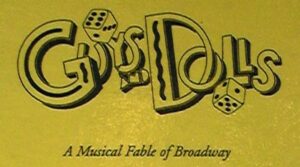
First, let’s define a few terms that will help along the way in outlining the wellsprings mentioned in the title above, particularly “libretto” or “lyrics” vs. “book.” I’ve run into these terms before and never quite gotten them straight. So the “libretto” (literally “little book” in Italian and typically used for opera) is the text of the sung parts, including the individual songs (or arias, again used primarily in opera) and any recitatives (that is, sung exposition). While an opera is usually all sung (but there are certainly exceptions such as The Magic Flute), musical theater typically has spoken parts as well. So the “book” is the compendium of everything the performers say or sing, as well as the stage directions. And thus the stage is set (ahem) for endless combinations, borrowings and re-workings. You’ll hear about someone getting an idea for a musical or an opera from seeing a play or reading a book and then going through the long and sometimes tortured process that will turn one format into another. Unless the creative mind behind it all is capable of doing everything—the words, the music, the staging—various roles have to be farmed out.
